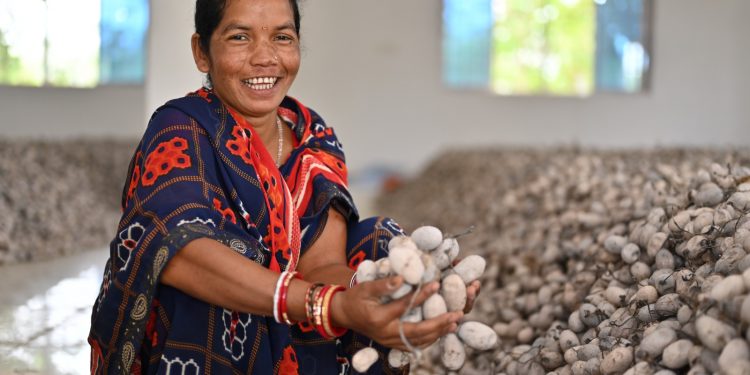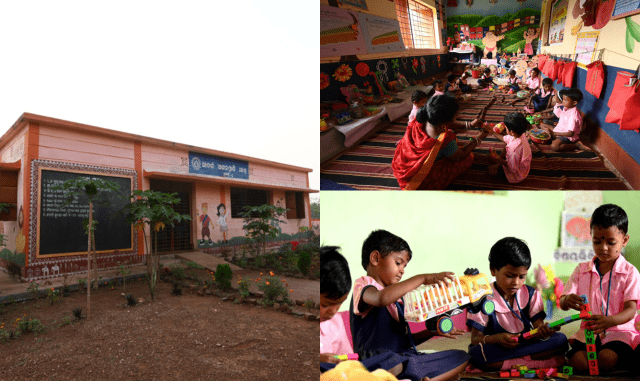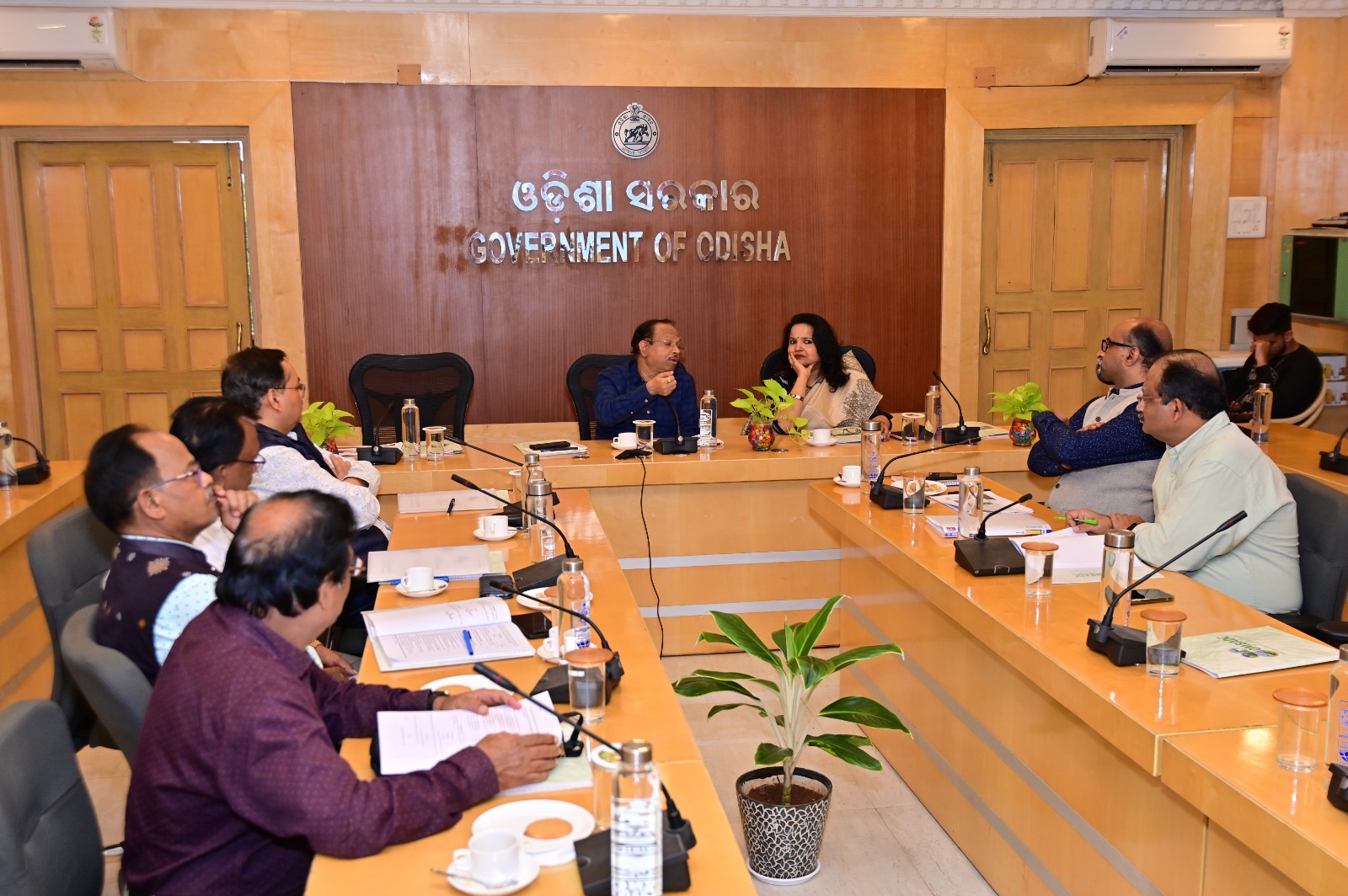Keonjhar/Bhubaneswar: Tassar rearing is considered as profitable livelihood initiative for the tribal communities at the village level. Therefore, to enhance the livelihood of the tribal farmers in the tribal majority Keonjhar district, Tassar rearing is being promoted by the Handlooms, Textiles & Handicrafts Department, Government of Odisha through the Directorate of Textiles and Handlooms. Odisha Mineral Bearing Areas Development Corporation (OMBADC) is playing a vital role by providing financial support to the initiatives of the Directorate.
Tassar rearing is practised widely across the Telkoi, Harichandanpur, Ghatagaon& Banspal blocks in Keonjhar district. Over 3,000 farmers in the district are being benefited through the initiative. Rearing Tassar cocoons through modern methodology, farmers earn Rs 1-2 lakh per year.
Under the Directorate of Textiles and Handloom, 13 Tassar Rearer Cooperative Societies (TRCS) are operational in the district to provide technical assistance to local farmers.
“Earlier I used to rear Tassar cocoons and sell it without substantial profit. Now, with the support from OMBADC, a better quality Tassar cocoon is being produced. During the last season, I earned Rs. 1.5 lakh from the sale of the cocoons,” shares Malti Tudu, a beneficiary farmer from Harichandanpur block.
“I have been cultivating Tassar for the past 7 years. We get good quality eggs for our production. We also get support during other times from releasing the worms in the jungle to harvesting the cocoon. The state government has put a robust arrangement for the sale of Tassar cocoons”, says another beneficiary, Iswar Chandra Marandi.
Tassar Silk larvae usually feed on the leaves of Asana and Arjuna trees. OMBADC provides financial support to the farmers through the Directorate for procuring required inputs like quick lime, bleaching powder and pesticide to reduce infections on the host trees.
Similarly, a successful Tassar production requires Disease Free Laying (DFLs). 3 Pilot Project Centres (PPCs) have been established in the district to provide disease-free layings i.e. eggs to the farmers. OMBADC also supports the proper management of the PPCs.
Farmers place the DFLs on the branches of Asana and Arjuna trees, where the larvae feed and grow, eventually forming cocoons. After 10 to 15 days, farmers harvest the cocoons, which are then sold to TRCS. At the TRCS, OMBADC aids in the stapling and grading of the cocoons.
“Tassar rearing plays a major role in ensuring a sustainable livelihood for farmers in the mining district of Keonjhar. For this, OMBADC provides financial assistance to farmers at various stages through the Directorate of Textiles and Handlooms. As a result, Tassar of the highest quality is being produced in Keonjhar district. KeonjharTassar has also got special recognition in the state and outside” affirms Sangeeta Minz, Assistant Director of Sericulture, Keonjhar.
The Tassarcoccon is taken from TRCS to the dedicated Tassar Silk Park at Bhagamunda in Harichandanpur block and across the state & outside. Here begins the process of converting Tassar cocoons into silk yarn, which is then woven into intricate apparel to meet the growing market demand.
During the 2023-24 season, Keonjhar district reported an impressive production of over 3.28 crore Tassar cocoons. The Directorate of Textiles and Handlooms has plans to exceed the mark during the current season. The price for the sale of Tassar Silk cocoon is fixed by the Odisha Co-operative Tassar and Silk Federation Limited (SERIFED).














